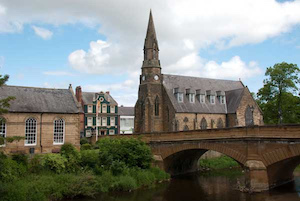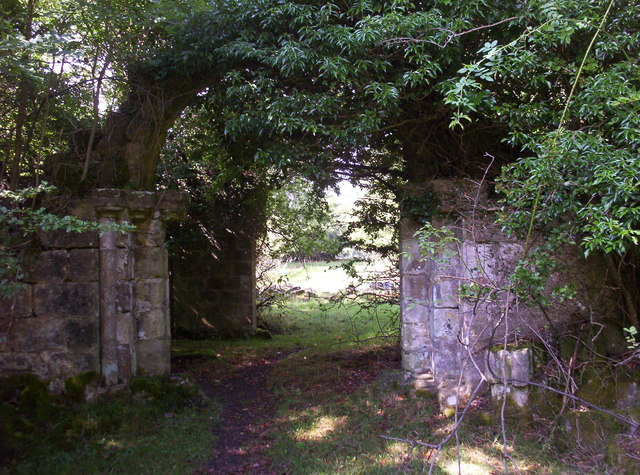Topics > Northumberland > Morpeth > Morpeth, Historical Account, 1848 > Newminster Abbey Township, 1848
Newminster Abbey Township, 1848
NEWMINSTER-ABBEY, a township, in the parish and union of Morpeth, partly in the W. division of Morpeth ward, N. division, and partly in the W. division of Castle ward, S. division, of the county of Northumberland; the whole containing 107 inhabitants. In the year 1138, a colony of Cistercian monks having come to Morpeth Castle from Fountains, in Yorkshire, at the invitation of Ranulph de Merlay, lord of Morpeth, he built an abbey for them here, and endowed it with all the lands of this township, and other considerable property. It was not long before the tide of popularity and religious enthusiasm rendered the community one of the richest in the county. Besides the gifts of succeeding barons of Morpeth, many were received from the Bertrams of Mitford, the barons of Bolam and Bolbeck, and the families of Umfraville, Widdrington, Fenwick, Plessis, &c. The site chosen for the abbey (which was dedicated to the Virgin) was very beautiful, in a secluded valley, the rising hills warding off the cold blasts from the east and north, and opening to admit the warm southern sun; the neighbouring stream produced abundance of fish, and an offset from it encircled the walls and turned a mill, while the fertility of the demesne lands yielded a plentiful supply of corn, which was stored in an adjoining grange. The abbot was often summoned to the parliaments of Edward I.; and Edward II. and III. dated many documents hence. Of this once magnificent structure, there only remains the north doorway of the church: the revenue at the Dissolution was £140. The township is situated on the north and south of the river Wansbeck, adjoining the town of Morpeth, and is intersected by the road to Elsdon. It comprises 717a. 2r. 10p., of which 397 acres are arable, 212 pasture, and the remainder wood, &c. The soil is of various qualities, gravelly near the river, but generally a good strong clay, well adapted to the growth of wheat; the surface is hilly, and the scenery beautifully interspersed with trees of large dimensions, particularly beech, which are of remarkable height near the ruin of the abbey. Two handsome bridges have been built over the Wansbeck, by subscription.
Extract from: A Topographical Dictionary of England comprising the several counties, cities, boroughs, corporate and market towns, parishes, and townships..... 7th Edition, by Samuel Lewis, London, 1848.










